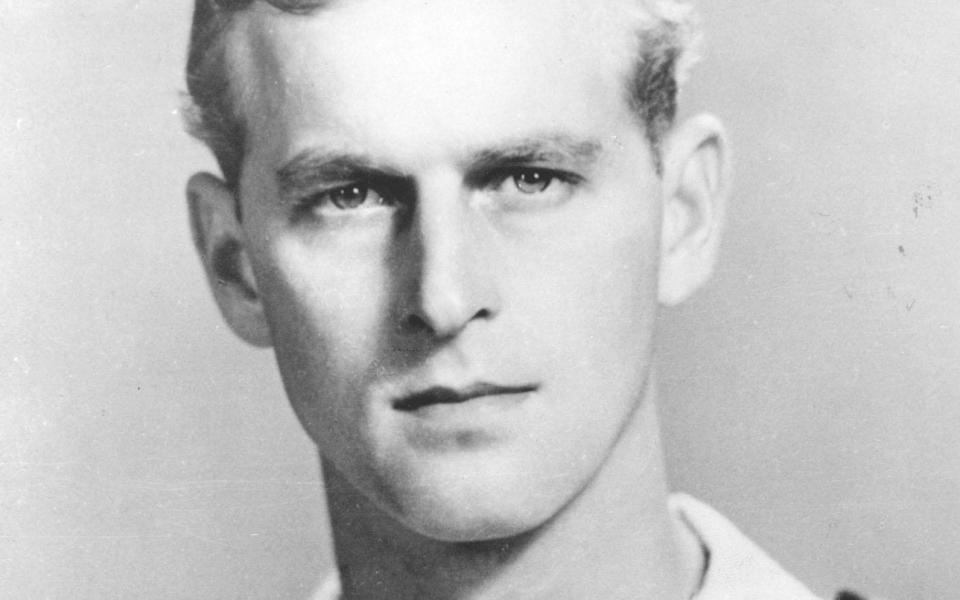Land Rover driver at Prince Philip's funeral spent week ensuring he could drive at correct speed

The servicemen in charge of the specially modified Land Rover carrying the body of the Duke of Edinburgh spent the past week making sure they could drive “at the correct speed”.
And, no wonder, as leading the vehicle on its way to the steps of St George’s Chapel, Windsor, on foot were the most senior members of the Armed Forces and the Band of the Grenadier Guards.
Corporal Louis Murray was behind the wheel, with Corporal Craig French, as Land Rover Commander for the Royal Hearse, both 29 years old, alongside him.
The two staff instructors from the Royal Electrical and Mechanical Engineers had been picked “on a coin-toss” from a group of four who had been training for the purpose and were described by officials as a “trusted pair of hands”.
Cpl French said it was his job to “ensure that the driver puts the vehicle in the right place at the right time and whether to speed up or slow down.”
“We have done a lot of practice over the last few days and you get to feel what the correct speed is, and we know what pace we have to be at. It’s now like second nature.
“There are also a couple of difficult sections on the route and on either side, there are people accompanying the hearse, so it is important to keep a safe distance.”
Cpl Murray added: “It is a great privilege and a once-in-lifetime thing to do. I’m very proud and I think my family will be very proud too.”
The Land Rover was waiting in the Quadrangle at Windsor Castle just before 2.45pm as the Duke’s coffin was placed onto its elongated back by a Bearer Party, comprising eight members of the Queen’s Company, 1st Battalion, the Grenadier Guards.
The Bearer Party (whose members have not been named because of their sensitive role) was commanded by Lieutenant Alec Heywood, whose grandfather Brigadier Tony Heywood served at the funeral of George VI and the Queen's coronation.
Led by the Band of the Grenadier Guards – of which the Duke was Colonel for 42 years – playing a funeral march, with its distinctive red and white drums wrapped in black material, the procession set off on its eight-minute journey to St George's Chapel.
Forty yards behind the Band were six Service Chiefs, including General Sir Nick Carter, Chief of the Defence Staff, Admiral Anthony Radakin, the First Sea Lord, and General Sir Mark Carleton-Smith, Chief of the General Staff.
Following them was the Duke’s coffin – draped in his standard – on the Land Rover, flanked by Pall Bearers drawn from the Royal Marines, The Rifles, the Royal Electrical and Mechanical Engineers, the Queen’s Royal Hussars and the Royal Regiment of Scotland.
Twenty yards behind the Land Rover and dressed in black were the Duke’s four children: the Prince of Wales, the Princess Royal, the Duke of York and the Earl of Wessex.
Then came the Duke’s grandchildren – the Duke of Cambridge, Peter Philips and the Duke of Sussex, as well as Lord Snowdon and Sir Tim Lawrence, followed by members of the Duke’s household and the Queen, in the State Bentley.
The procession continued at a stately 4mph through the Quadrangle, lined by the Household Cavalry and the Foot Guards and with representatives of detachments from units with a special relationship to the Duke, including HMS Magpie, HMS Collingwood, HMS Sultan and the Royal Fleet Auxiliary on the grass.

The route was lined by representatives from 20 service detachments with links to the Duke including the Royal Navy, Household Cavalry, Welsh Guards, Royal Gurkha Rifles and the Royal Fleet Auxiliary stood ramrod straight and with flags lowered, as the Land Rover drove past.
As the procession continued on its journey, the band played Beethoven’s Funeral March Numbers 1 and 3. The only other sounds were from the guns of the King’s Troop Royal Horse Artillery, which were fired every minute from the East Lawn of Windsor Castle and the mournful tolling of the Curfew Tower Bell.
The procession arrived at the West Steps of St George’s Chapel at 2.53pm when the Duke’s coffin was received by a Guard of Honour of the Rifles and a Royal Navy Piping Party.
Watched by members of the Royal Family, and saluted by the Service chiefs, the Duke’s coffin was carried up the steps by a Bearer Party of eight Royal Marines before pausing for a minute’s silence and then disappearing from view into the chapel.
In all, more than 730 members of the Armed Forces had taken part in the ceremony.
Speaking just before the ceremony, Gen Carter said: “There won't be a service man or service woman on parade today who won't have their chest swelling with pride.
"We all have a huge regard for him. We have a huge regard for his wartime record and the care that he showed for veterans and for those still serving. It'll be a sombre moment for us, but it will also be a celebratory moment, I think, because it was a special life and a life that was well-lived."

 Yahoo News
Yahoo News 